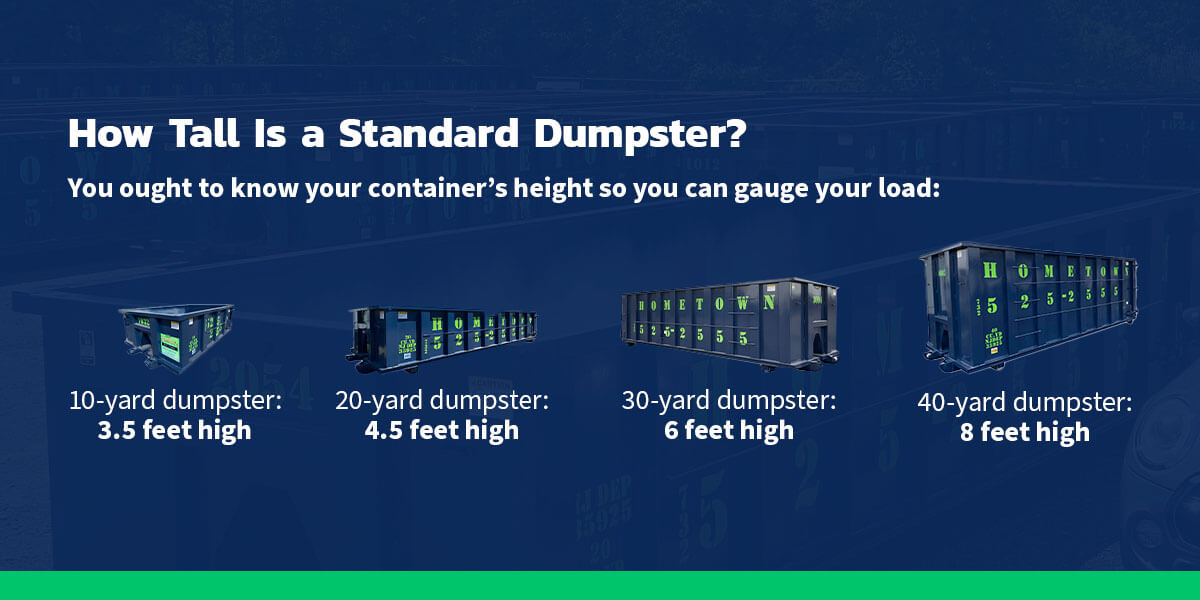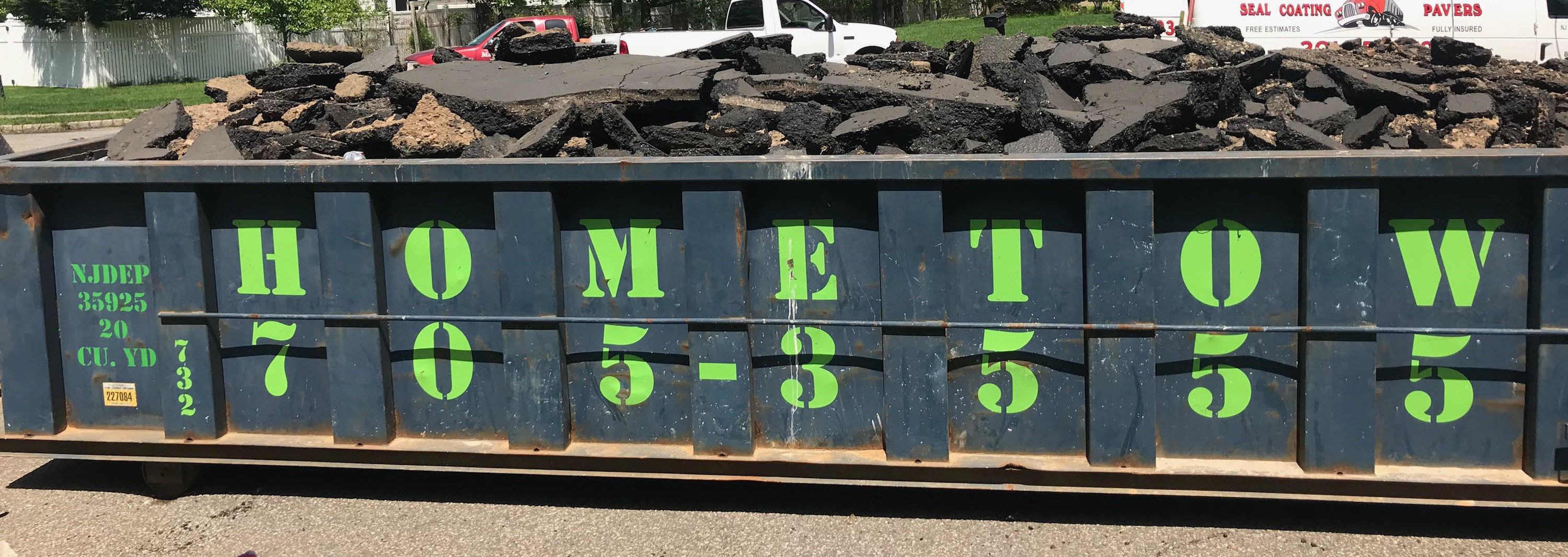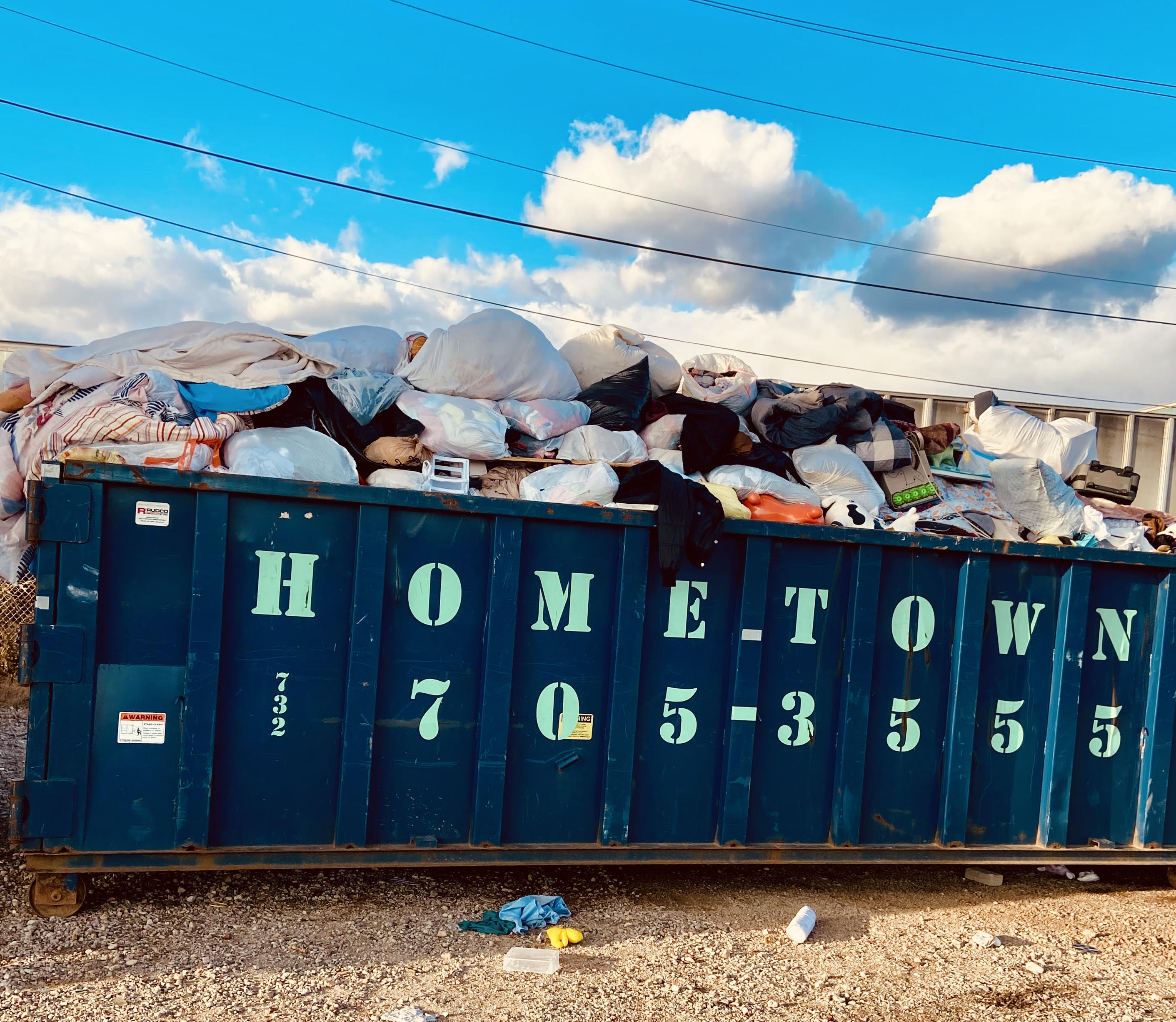How to Load a Dumpster
Dumpsters are incredibly helpful tools when you’re taking on big projects like home renovations or estate cleanouts. But many dumpster users and first-time renters may not know exactly how to fill a roll-off bin. Yes, there are best practices on how to fill a dumpster that can help you maximize your investment in the rental, as well as help everyone remain safe during the project. Here are five tips on filling a dumpster.
6 Tips for Properly Loading a Dumpster:
It is crucial to prioritize safety when stacking items. You can uphold safety by selecting a flat, stable area for placement. You will need ample space for the container’s doors to open fully and give you easy access to pack the dumpster as follows:
1. Break Things Down
Whatever you’re going to put in your dumpster, break it down to its smallest state. This goes for foam, concrete, drywall and other items. The smaller you can break down these items, the more you will be able to place in your unit — which means greater value for your rental.
You can condense the size of some cabinetry or furniture for more convenient disposal by removing the screws and taking the pieces apart. If you can’t reduce the dimensions of more oversized items, plan to get the right dumpster size you need:
- 10-yard dumpster: This size is perfect for smaller objects.
- 20-yard dumpster: These dimensions are ideal for furniture and large appliances.
- 30-yard dumpster: This option fits bed frames, dressers and couches.
- 40-yard dumpster: This size can accommodate a big project’s large and heavy items.
2. Flatten Boxes
If you’re working with cardboard removal, it’s highly important to flatten all boxes. This can be time-consuming and a general hassle, but it will save you a great deal of space in a container. Instead of filling the bin with constructed boxes, grab a box cutter and ensure you reduce the materials to their flattest state.
Be careful when folding flattened boxes, too. If they don’t fold down to be completely flat, they can sometimes form pockets of unused space at the bottom of a dumpster. After checking to ensure the boxes achieve their most condensed form possible, consider aligning or stacking them for disposal. This organized approach helps you get the most out of your space when renting any 10-to-40-yard dumpster for your project.
3. Bulk at the Bottom
Are you working with bulky items like old equipment, furniture, housing fixtures and similar things? If so, place the bulkiest items at the bottom.
Walk bulky items in through the dumpster’s doors and start from the back, moving forward. That will give you more room for enhanced space utilization and safer loading. Once you have a layer of bulky items at the base of your unit, you can start to fill in with smaller items.
Remember, even weight distribution goes a long way to safely delivering goods without a hitch. You’ll want to prevent shifting during transportation — keep a few heavier items on top to secure lighter materials so they stay put.
4. Fill the Gaps
Objects each have unique shapes and sizes to consider. Because of this variety, maximizing space can feel like putting a jigsaw puzzle together. Always fill in gaps as you begin to stack your contents. It’s easy when you’re in the midst of a significant removal project to work quickly and go too fast. But be conscientious throughout your project and pause every once in a while to make sure you are filling all the spaces.
Start by laying large, flat materials along the bottom of your receptacle before placing items on top. If you’re throwing away furniture, aim to fill the empty areas formed by the legs with smaller items to be trashed.
5. Distribute Weight Evenly
Make sure you’re distributing weight across your dumpster. If the weight is not evenly distributed, the dumpster can shift during loading or transit, and items can roll off the dumpster, which can lead to a dangerous situation for all involved. Take time throughout your project to assess how well your dumpster is filling and to ensure the weight is properly balanced.
When filling a 20-yard or larger disposal unit, distribute heavier materials, such as bricks or appliances, along the bottom and pile lighter items on top. Although it may take a more thoughtful approach to organize materials by weight, this extra effort can improve safety and organization.
6. Don’t Stack too High
Lastly, ensure you stack within the side wall of the dumpster because loose items can fly out during transportation. The loose debris can cause harm and possibly death if it hits someone. Overfilling can pose significant risks:
- Safety hazards: Overloading can cause tipping, spillage and road accidents.
- Property damage: High levels of content can cause debris to scatter, compromising nearby neighborhoods and buildings.
- Legal compliance: Avoid exceeding weight limits, as you can face repercussions for traveling with an overweight container.
How Tall Is a Standard Dumpster?
You ought to know your container’s height so you can gauge your load:

- 10-yard dumpster: 3.5 feet high
- 20-yard dumpster: 4.5 feet high
- 30-yard dumpster: 6 feet high
- 40-yard dumpster: 8 feet high
CONTAINER FILLING SAFETY REGULATIONS
Overloading a roll-off bin can cause many issues with disposal. See below for common mistakes when packing a dumpster and examples of what not to do when filling your rental.

Above is an example of how not to load a dumpster with roofing materials. Since the waste is above the top rail, we cannot safely transport the materials so they can be disposed of.

In the example above, the dumpster was overfilled with asphalt. It’s important to remember when loading heavy materials such as concrete, dirt or asphalt that the bin must be loaded at least 12 inches below the top of the container. If it isn’t, the container will exceed the weight limit allowed to drive on public roads legally. Safety issues become a huge liability for the company when this is the case. If you have more to dispose of than what fills the container 12 inches from the top, we’d recommend discussing it with your rental company or renting a second container.

Usually, furniture will not cause a receptacle to go overweight, but a dumpster cannot carry over the top. Safety is our biggest concern at Hometown Waste, and a dumpster loaded like the one above cannot be safely transported for disposal.

The only thing pretty about the picture above is the sky. During a large cleanout, this dumpster was entirely overfilled. When packing a unit, the contents should always be below the top rim of the bin. In this case, the contents were about 4 feet over the bin, meaning we could not transport the dumpster safely.
Establish safety procedures by ensuring a clean working space free of hazards. You will benefit from using material handling equipment rather than manually moving, repositioning or compacting contents. Exercise extra care in the middle of storms or other adverse weather conditions. Keep off and out of the dumpster, and allow trained professionals to navigate it. You should also regularly keep an eye on the fill level to manage overfilling.
Where safety becomes a growing concern, you can always count on expert professionals to employ proper lifting techniques and protect you and your property.
Have Questions About Your Rental?
At Hometown Waste, we offer rental bins throughout New Jersey at highly competitive prices. Whether you’re taking on a one-time project and wondering about best practices for filling a container or you’re a seasoned pro performing renovation projects regularly, we have the waste removal solutions that make your job easier.
We highly recommend contacting our support team so we can assist you with choosing the perfect-sized dumpster for your application. Based on our industry knowledge, we can help you avoid filling a dumpster incorrectly, which will help eliminate additional charges associated with transporting and ridding the debris.
Contact us today about your dumpster rental options in New Jersey.
CHOOSE HOMETOWN WASTE FOR YOUR COLLECTION NEEDS
When you’re looking for a dumpster rental company, Hometown Waste & Recycling Services Inc. delivers your solutions by providing and distributing containers for all kinds of projects. We offer 10-, 20-, 30- and 40-yard options. To get a free quote, call us or contact us online today!


